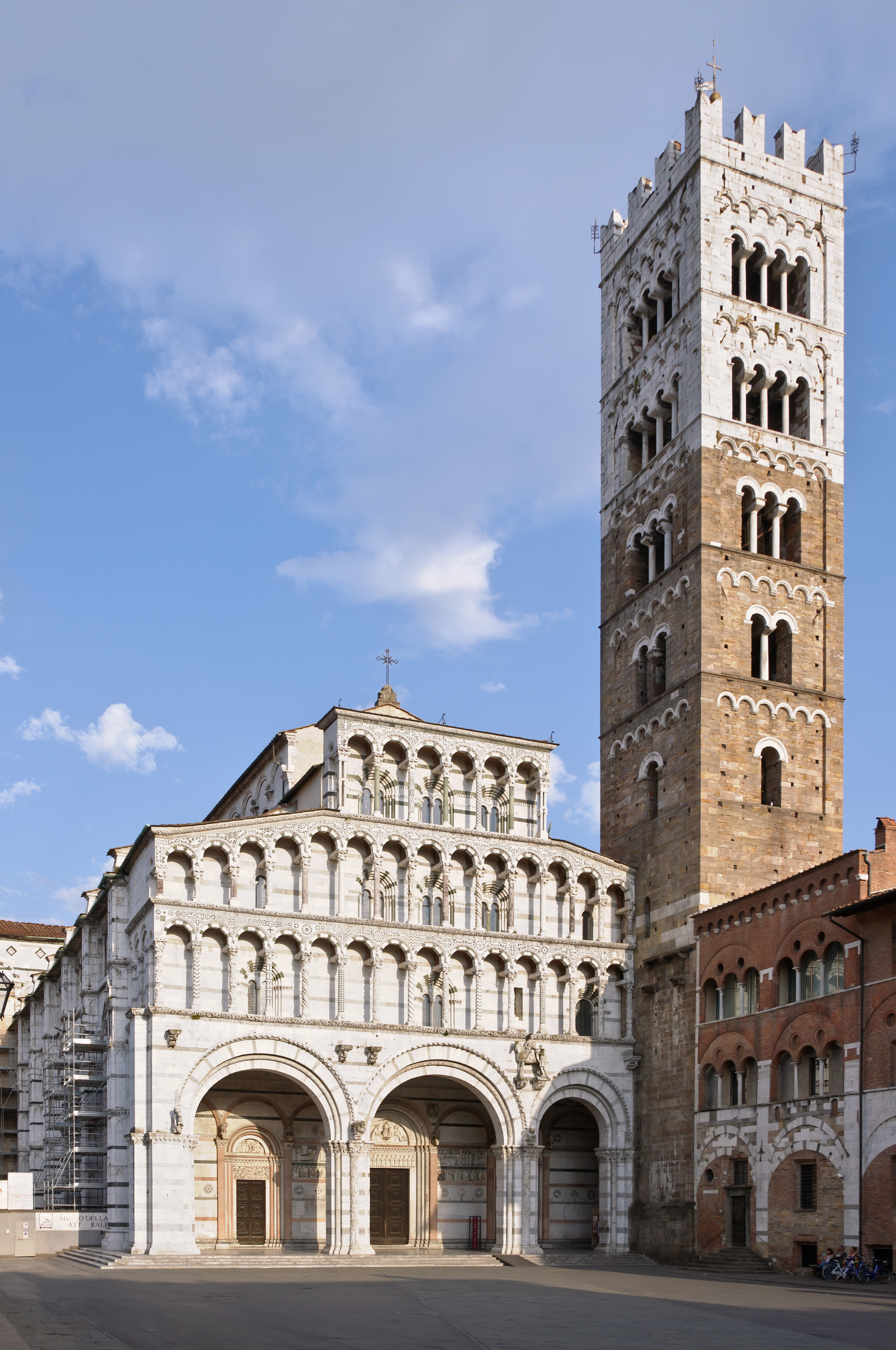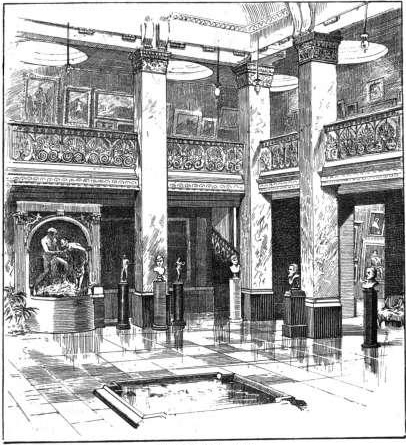|
Christopher Whall
Christopher Whitworth Whall (1849 – 23 December 1924) was a British stained-glass artist who worked from the 1880s and on into the 20th century. He is recognised as a leader in the Arts and Crafts movement and a key figure in the modern history of stained glass. Early life and studies Christopher Whall was born in the rectory at Thurning, Northamptonshire, where his father, William Whall, was the rector. He was educated at home with his siblings until his teens. In 1863 he was sent to Rossall School in Lancashire. The drawing master there was William Coulter of the Royal Hibernian Academy. He left Rossall School in 1865, and in 1867 enrolled as a probationer at the Royal Academy Schools. On 8 January 1868 he was admitted as a student there—a professional path taken against his parents' wishes.Catalogue of exhibition held by William Morris Gallery. London Borough of Waltham Forest. 17 November 1979 to 3 February 1980. Many of Whall's design(s) for stained glass wind ... [...More Info...] [...Related Items...] OR: [Wikipedia] [Google] [Baidu] |
List Of Works By Christopher Whall
This is a list of the stained-glass works of Christopher Whall (1849–1924). Whall's works include: * Christopher Whall works in Gloucester Cathedral, Gloucester Cathedral * List of War Memorial windows by Christopher Whall, War Memorial windows * List of Christopher Whall works in Scotland, Works in Scotland * List of Christopher Whall works in Cathedrals and Minsters, Cathedral and minster windows Works in parish churches Image:Whall Window Holy Trinity 2.jpg, First and second lights in Whall's four-light traceried window "The Holy Spirit and Pentecost" at Holy Trinity Sloane Street. Image:Holy Trinity Church Whall 1.jpg, Third and fourth lights in Whall's four-light traceried window "The Holy Spirit and Pentecost" at Holy Trinity Sloane Street. Image:Whall Window Holy Trinity 3.jpg, View of the complete four-light traceried window "The Holy Spirit and Pentecost" at Holy Trinity Sloane Street. Image:Whall Window Holy Trinity 4.jpg, Part of Whall's window "The Adoration ... [...More Info...] [...Related Items...] OR: [Wikipedia] [Google] [Baidu] |
Thurning, Northamptonshire
Thurning is a village and civil parish in the English county of Northamptonshire. Located in the north-east of the county, about 5.5 miles south-east of Oundle, Thurning forms part of the civil parish of Hemington, Luddington and Thurning. Until 1888, the ecclesiastical parish of Thurning was partly in Northamptonshire and partly in Huntingdonshire, its parish church being in the latter county. At the time of the 2001 census, the population of Thurning Civil Parish was 93 people. At the time of the 2011 Census, the population of the village remained less than 100 and is included in the civil parish of Hemington. The village's name probably means, 'place with thorn trees'. St James' Church The parish church of St James is a Grade II listed building. Dating from the 12th century, the west wall and spirelet were rebuilt and the church restored in 1880 by Carpenter and Ingelow. The church had links with the Oxford Movement The Oxford Movement was a theological moveme ... [...More Info...] [...Related Items...] OR: [Wikipedia] [Google] [Baidu] |
Lucca
Città di Lucca ( ; ) is a city and ''comune'' in Tuscany, Central Italy, on the Serchio River, in a fertile plain near the Ligurian Sea. The city has a population of about 89,000, while its Province of Lucca, province has a population of 383,957. Lucca is known as an Italian "Città d'arte" (City of Art) from its intact Renaissance-era Walls of Lucca, city walls and its very well preserved historic center, where, among other buildings and monuments, are located the Piazza dell'Anfiteatro, which has its origins in the second half of the 1st century A.D., the Guinigi Tower, a tower that dates from the 14th century and the Cathedral of San Martino. The city is the birthplace of numerous world-class composers, including Giacomo Puccini, Alfredo Catalani, and Luigi Boccherini. Toponymy To the Ancient Rome, Ancient Romans, Lucca was known as ''Luca''. From more recent and concrete toponymic studies, the name Lucca has references that lead to "sacred grove" (Latin: ''lucus''), " ... [...More Info...] [...Related Items...] OR: [Wikipedia] [Google] [Baidu] |
Holy Trinity Sloane Street
The Church of the Holy and Undivided Trinity with Saint Jude, Upper Chelsea, commonly called Holy Trinity Sloane Street or Holy Trinity Sloane Square, is a Church of England parish church in London, England. It was built in 1888–90 at the south-eastern side of Sloane Street, to a striking Arts and Crafts design, by the architect John Dando Sedding, and paid for by 5th Earl Cadogan, in whose London estate it lay. It replaced an earlier building only half its size which, at the time of its demolition, was less than 60 years old. The church is a Grade I listed building. History Original building The first church on the site was a Gothic construction of 1828–30 designed by James Savage, built in brick with stone dressings. The west front, towards the street, had an entrance flanked by octagonal turrets topped with spires. Its seating capacity was recorded as 1,450 in 1838 and 1,600 in 1881. It was originally intended as chapel of ease to the new parish church of S ... [...More Info...] [...Related Items...] OR: [Wikipedia] [Google] [Baidu] |
New Gallery (London)
The New Gallery is a Crown Estate-owned Grade II Listed buildingIPA: ''New Gallery, Regent Street, London'' Linked 2015-11-21 at 121 , London, which originally was an from 1888 to 1910, The New Gallery Restaurant from 1910 to 1913, The New Gallery Cinema from 1913 to 1953,Cinema Treasure: ''New Gallery Cinema'' Relinked 2015-11-21 and a |
Arts And Crafts Exhibition Society
The arts or creative arts are a vast range of human practices involving creative expression, storytelling, and cultural participation. The arts encompass diverse and plural modes of thought, deeds, and existence in an extensive range of media. Both a dynamic and characteristically constant feature of human life, the arts have developed into increasingly stylized and intricate forms. This is achieved through sustained and deliberate study, training, or theorizing within a particular tradition, generations, and even between civilizations. The arts are a medium through which humans cultivate distinct social, cultural, and individual identities while transmitting values, impressions, judgments, ideas, visions, spiritual meanings, patterns of life, and experiences across time and space. The arts are divided into three main branches. Examples of visual arts include architecture, ceramic art, drawing, filmmaking, painting, photography, and sculpture. Examples of literature include ... [...More Info...] [...Related Items...] OR: [Wikipedia] [Google] [Baidu] |
Art Workers' Guild
The Art Workers' Guild is an organisation established in 1884 by a group of British painters, sculptors, architects, and designers associated with the ideas of William Morris and the Arts and Crafts movement. The guild promoted the 'unity of all the arts', denying the distinction between fine and applied art. It opposed the professionalisation of architecture – which was promoted by the Royal Institute of British Architects at this time – in the belief that this would inhibit design. In his 1998 book, ''Introduction to Victorian Style'', University of Brighton's David Crowley stated the guild was "the conscientious core of the Arts and Crafts Movement". History The guild was not the first organisation to promote the unity of the arts. Two organisations, the Fifteen and St George's Art Society had existed previously, and the guild's founders came from the St George's Art Society. They were five young architects from Norman Shaw's office: W. R. Lethaby, Edward Schroeder Prior, ... [...More Info...] [...Related Items...] OR: [Wikipedia] [Google] [Baidu] |
Arts And Crafts Movement
The Arts and Crafts movement was an international trend in the decorative and fine arts that developed earliest and most fully in the British Isles and subsequently spread across the British Empire and to the rest of Europe and America. Initiated in reaction against the perceived impoverishment of the decorative arts and the conditions in which they were produced, the movement flourished in Europe and North America between about 1880 and 1920. Some consider that it is the root of the Modern Style, a British expression of what later came to be called the Art Nouveau movement. Others consider that it is the incarnation of Art Nouveau in England. Others consider Art and Crafts to be in opposition to Art Nouveau. Arts and Crafts indeed criticized Art Nouveau for its use of industrial materials such as iron. In Japan, it emerged in the 1920s as the Mingei movement. It stood for traditional craftsmanship, and often used medieval, romantic, or folk styles of decoration. It advoca ... [...More Info...] [...Related Items...] OR: [Wikipedia] [Google] [Baidu] |
James Powell And Sons
The firm of James Powell and Sons, also known as Whitefriars Glass, were London-based English glassmakers, leadlighters and stained-glass window manufacturers. As Whitefriars Glass, the company existed from the 18th century, but became well known as a result of the 19th-century Gothic Revival and the demand for stained glass windows. History Early years In 1834, James Powell (1774–1840) purchased the Whitefriars Glass Company, a small glassworks off Fleet Street in London, believed to have been established in 1680. He was a London wine merchant and entrepreneur, of the same family as the founder of the Scout movement, Robert Baden-Powell. Powell, and his sons Arthur and Nathanael, were newcomers to glass making, but soon acquired the necessary expertise. They experimented and developed new techniques, devoting a large part of their production to the creating of stained glass windows for churches. The firm acquired a large number of patents for their new ideas and became worl ... [...More Info...] [...Related Items...] OR: [Wikipedia] [Google] [Baidu] |
Hardman & Co
Hardman & Co., otherwise John Hardman Trading Co., Ltd., founded 1838, began manufacturing stained glass in 1844 and became one of the world's leading manufacturers of stained glass and ecclesiastical fittings. After the doors closed at Lightwoods Park Justin Hardman, a descendant of John Hardman kept the heart of the studio alive and with the help of chief designer, Artist Edgar JB Phillips (son of Edgar S Phillips, Hardman’s Chairman) they continue to design and manufacture exquisite traditional Hardman stained glass around the world. History John Hardman senior, (1766–1844), of Handsworth, West Midlands, Handsworth, then in Staffordshire, England (and now part of Birmingham), was the head of a family business designing and manufacturing metalwork. He was described as the "opulent button maker and medallist". In the 1830s Augustus Welby Pugin was commissioned by the Bishops in the Catholic Church, Roman Catholic Bishop, Thomas Walsh, to design a suitable church to house ... [...More Info...] [...Related Items...] OR: [Wikipedia] [Google] [Baidu] |
Clerkenwell
Clerkenwell ( ) is an area of central London, England. Clerkenwell was an Civil Parish#Ancient parishes, ancient parish from the medieval period onwards, and now forms the south-western part of the London Borough of Islington. The St James's Church, Clerkenwell, church of St James in Clerkenwell Close and nearby Clerkenwell Green sit at the centre of Clerkenwell. Located on the edge of the City of London, it was the home of the Clerkenwell Priory, Priory of St John and the site of a number of wells and spas, including Sadlers Wells and Spa Green. The well after which the area was named was rediscovered in 1924. The Marquess of Northampton owned much of the land in Clerkenwell, reflected in placenames such as Northampton Square, Spencer Street and Compton Street. The watchmaking and watch repairing trades were once of great importance, particularly in the area around Northampton Square. In the 20th century, Clerkenwell became known as a centre for architecture and design. Cl ... [...More Info...] [...Related Items...] OR: [Wikipedia] [Google] [Baidu] |










